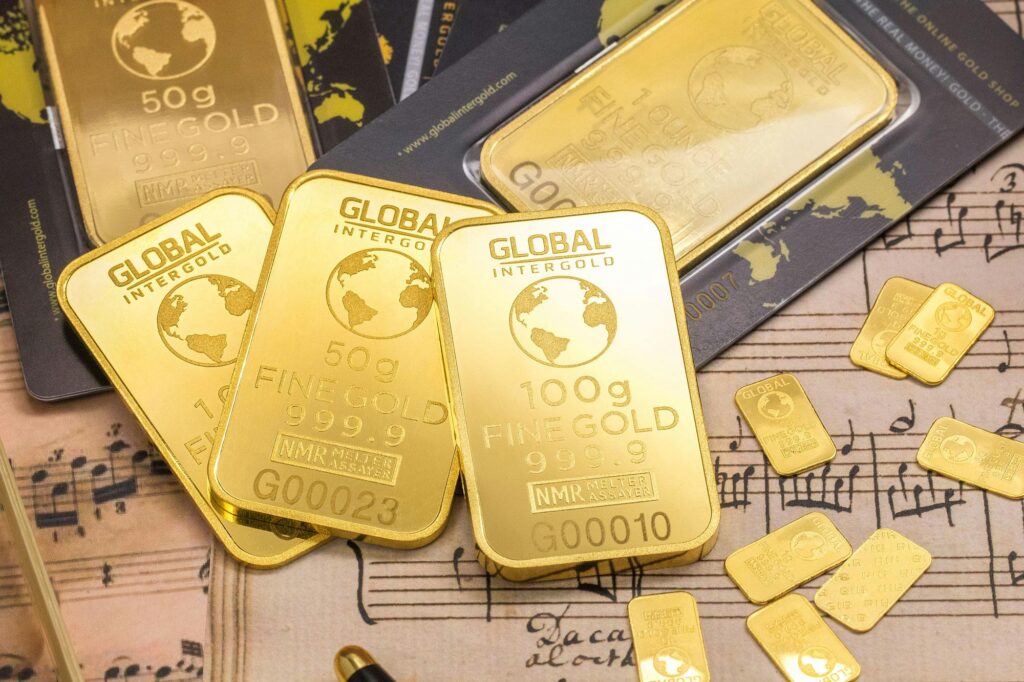Gold has long been revered as a symbol of wealth and prosperity, transcending cultures and centuries. In the realm of investment, its luster has not faded; gold continues to hold a significant place in the portfolios of modern investors. Traditionally viewed as a “safe haven” during times of economic turmoil, the relevance of gold in contemporary investment strategies, especially amid prevailing economic uncertainties, is a topic of keen interest. This article evaluates gold’s traditional role and its place in modern investment portfolios.
Gold’s Historical Context as a Safe Haven
Historically, gold has been a go-to asset for investors seeking to protect their wealth from the vagaries of economic downturns, inflation, and currency devaluation. Its intrinsic value is not tied to any single economy or financial system, making it a universal store of wealth. During periods of high inflation, political instability, or when stock markets are volatile, investors have turned to gold as a hedge, believing it to retain its value better than other assets.
Gold in Contemporary Investment Portfolios
In today’s complex financial landscape, characterized by rapid technological advancements, geopolitical tensions, and uncertainties like the COVID-19 pandemic, gold’s role has evolved yet remains fundamentally anchored in its safe haven appeal. The question for modern investors is not whether gold has value, but how much of it belongs in a diversified portfolio.
Diversification and Risk Management: Gold’s performance tends to have a low correlation with that of stocks and bonds, which means it can act as a diversifying agent. When traditional investments face downturns, gold prices often move in the opposite direction, helping to balance portfolio losses.
Inflation Hedge: With central banks around the world engaging in unprecedented levels of quantitative easing in response to economic crises, concerns over inflation have resurfaced. Gold is historically sought after as an inflation hedge, with its price typically rising when the purchasing power of fiat currencies declines.
Digital Age and Cryptocurrencies: The rise of digital assets, especially cryptocurrencies, has introduced new dynamics to the concept of “safe haven” assets. While some view cryptocurrencies as digital gold, the volatility and regulatory uncertainties surrounding them contrast sharply with gold’s stability and universal acceptance.
Evaluating Gold’s Place in Modern Portfolios
The inclusion of gold in an investment portfolio should be calibrated to an individual’s risk tolerance, investment horizon, and financial goals. Here are some considerations for integrating gold into modern portfolios:
- Portfolio Allocation: Conventional wisdom suggests a moderate allocation to gold, often recommended to be in the range of 5-10% of a portfolio. This allocation can provide a safety net during downturns without sacrificing too much growth potential from more aggressive investments.
- Forms of Investment: Investors today have multiple ways to invest in gold, from physical bullion and coins to gold ETFs (Exchange-Traded Funds) and mining stocks. Each comes with its own set of considerations regarding liquidity, storage, and exposure to gold prices.
- Market Timing: While timing the market is notoriously challenging, being aware of economic indicators and trends can inform decisions on increasing or decreasing gold exposure. For instance, ramping up gold investments in anticipation of economic downturns or inflationary periods can be a prudent strategy.
- Rebalancing: As with any asset class, the proportion of gold in a portfolio will fluctuate with market movements. Regular rebalancing back to a target allocation ensures that gold continues to serve its intended role without disproportionately affecting risk and return profiles.
In the whirlwind of today’s financial markets, gold maintains its stature as a bastion of stability and a beacon of value preservation. Its traditional role as a safe haven is not only relevant but perhaps more critical in the face of modern economic uncertainties. For investors, the inclusion of gold in a portfolio offers a time-tested strategy for risk management and diversification. As we navigate through the complexities of the 21st-century economic landscape, gold remains a valuable component of investment portfolios, balancing the promise of growth with the prudence of preservation.


